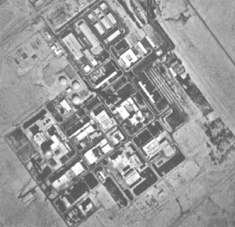As a non-nuclear armed signatory to the treaty, Iran is banned from acquiring nuclear weapons and is required to allow the IAEA to inspect and verify all nuclear materials and activities, including at short notice, if asked.
The agency regularly inspects Iran’s nuclear facilities, including sites like Natanz, Fordow, and Isfahan. The aim is to ensure that nuclear materials are only used for peaceful means and are not diverted for weapons use.
On 9 June, Mr. Grossi noted that man-made uranium particles had been found at three more, undeclared sites (Varamin, Marivan and Turquzabad). Iran, he said, had failed to provide “technically credible explanations” for the presence of the particles, despite years of consultations.
Yet somehow.... they did inspections on june 9th?
They literally have inspectors still in iran during this shit show.

www.iaea.org
Since the military attacks began almost a week ago, the IAEA has been reporting on damage at several of these facilities, including at nuclear-related sites located in Arak, Esfahan, Natanz and Tehran, and their potential radiological impact.
In his
statement to the Board of Governors on 13 June, the morning of the attacks on Iranian nuclear facilities, the Director General recalled the numerous General Conference resolutions on the topic of military attacks against nuclear facilities, in particular, GC(XXIX)/RES/444 and GC(XXXIV)/RES/533, which provide, inter alia, that “any armed attack on and threat against nuclear facilities devoted to peaceful purposes constitutes a violation of the principles of the United Nations Charter, international law and the Statute of the Agency”.
He also stated that, furthermore, the IAEA has consistently underlined that “armed attacks on nuclear facilities could result in radioactive releases with grave consequences within and beyond the boundaries of the State which has been attacked”, as was stated in GC(XXXIV)/RES/533.
It was the Director General’s third comprehensive statement in four days about the situation in Iran, following the
statement to the Board on 13 June and
one to the United Nations Security Council later the same day. In addition, the Agency has provided regular updates on its official X account.
IAEA inspectors remain present in Iran, ready to be deployed at nuclear sites when possible, even though the number of Agency staff has been reduced somewhat in light of the security situation, Director General Grossi said.
He added: “The Agency is and will remain present in Iran. Safeguards inspections in Iran will continue as required by Iran’s safeguards obligations under its NPT (Non-Proliferation Treaty) Safeguards Agreement, as soon as safety and security conditions allow.”

